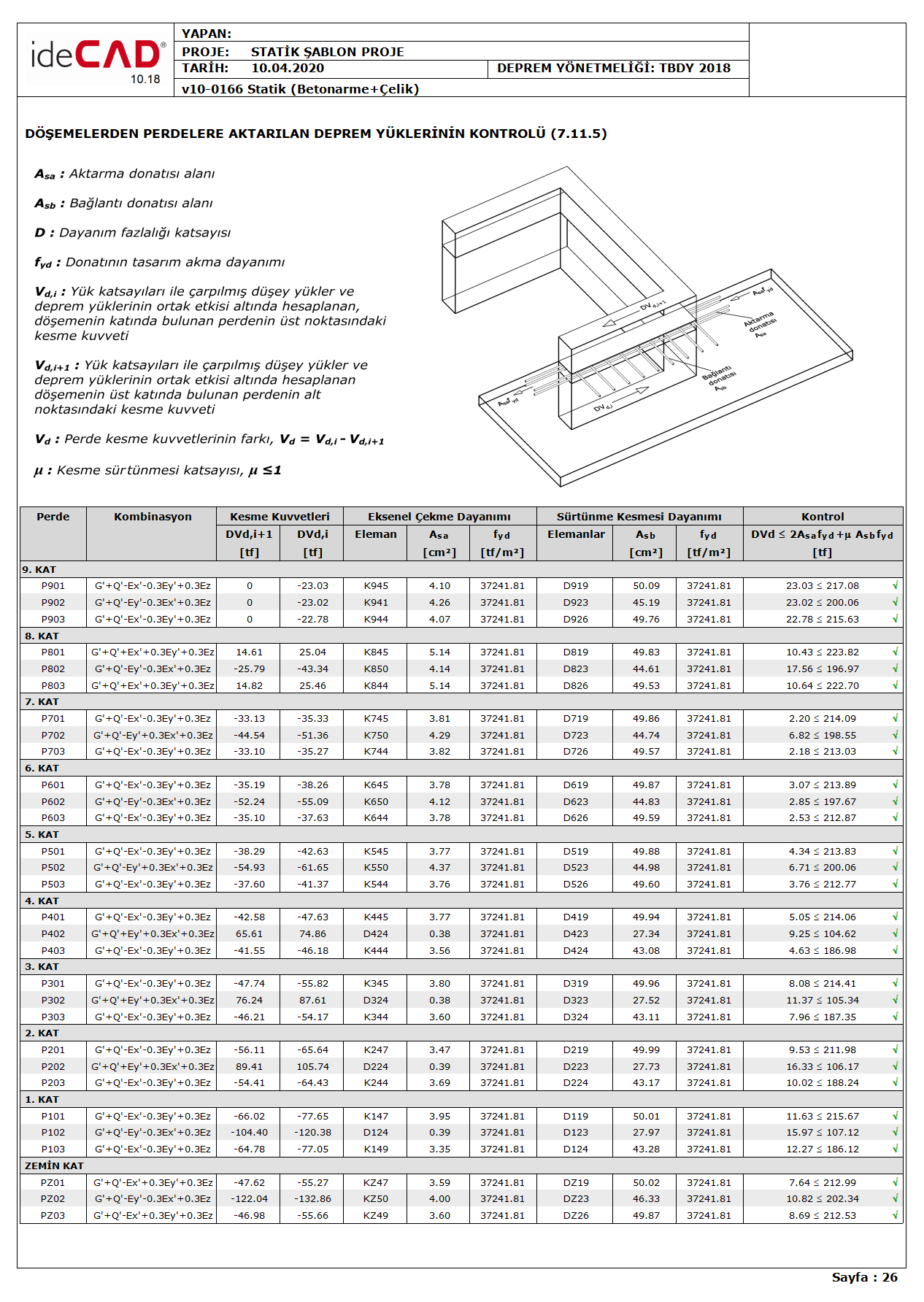Transfer Force Between Diaphram (Slab) and Shearwall Report
The earthquake force to be transferred from the floors to the curtain or curtain column in a strong direction is taken as the difference of the shear forces occurring in the lower and upper sections of the floor level. This shear force is transferred by the sum of the friction shear of the reinforcements at the slab wall intersection and the tensile strengths of the reinforcements stuck into the curtain in a strong direction. An example of a report is given below and details of the calculation steps are explained.

DV d, i + 1 : It is the shear force that occurs under the effects of earthquakes, which is increased by the Resistance Excess Coefficient D together with the vertical loads, occurring in the lower section of the strong direction of the wall above the floor level.
DV d, i : It is the shear force that occurs under the effects of earthquakes, which is increased by the Strength Excess Coefficient D together with the vertical loads, occurring in the upper section of the strong direction of the wall below the floor level.
DV d : It is the shear force that will be transferred to the curtain or curtain arm in a strong direction.
DV is calculated as d = (DV d, i + 1 - DV d, i ). Since the Strength Excess Coefficient D is taken into account when calculating the shear forces above and below the floor level, the Strength Excess Coefficient is also taken into account at the DV d value. In this shear force calculation, the shear force differences in the places where the transition from the basement to the normal floor is taken into consideration together with the signs.
2 h f yd refers to the sum of the axial tensile strength formed by the beam or slab reinforcement required for the process over from the screen indicated by the penetrating direction from both sides and strong resistance to bending. Here, the total area of the transfer reinforcement is expressed as A h . While calculating A hr , the area of reinforcement required for the flexural strength at the relevant point is subtracted from the total area of the reinforcements stuck in the curtain wall. If there is a floor or beam on one side of the curtain, this value is taken into account without multiplying by 2. A sa value, design yield strength of reinforcement, f yd The axial tensile strength of the remaining reinforcement required for bending strength is found when multiplied by,.
The process indicated by μA sb f yd is the shear friction strength created by the remaining floor reinforcement that is required for the flexural strength at the joint of floor and curtain. Here, A sb value is obtained from all reinforcement areas in the combination of slab and curtain, by the difference of the area of reinforcement required for the bending strength in this region. In addition , in the calculation of A sb , if a beam is stuck to the curtain from the strong direction of the curtain, these beams and the reinforcements in the slab joints are also taken into consideration. The μ coefficient is expressed as the friction coefficient and is calculated according to TS500. μA sb value design yield strength of reinforcement, f ydWhen multiplied by, there is the shear friction strength value. Slab gaps and additional reinforcements defined for the slab are taken into consideration in the calculation of the connection reinforcements.
7.11.5 TBDY Article according to transfer direction into the screen or curtain of strongly column laying earthquake forces, DV d , 2 h for yd and μ to the SB f yd must not exceed the sum of the resistance. This value is checked in the last column of the report.
This control is applied in all curtains with floor curtain connection, including basement curtains.
Next Topic
